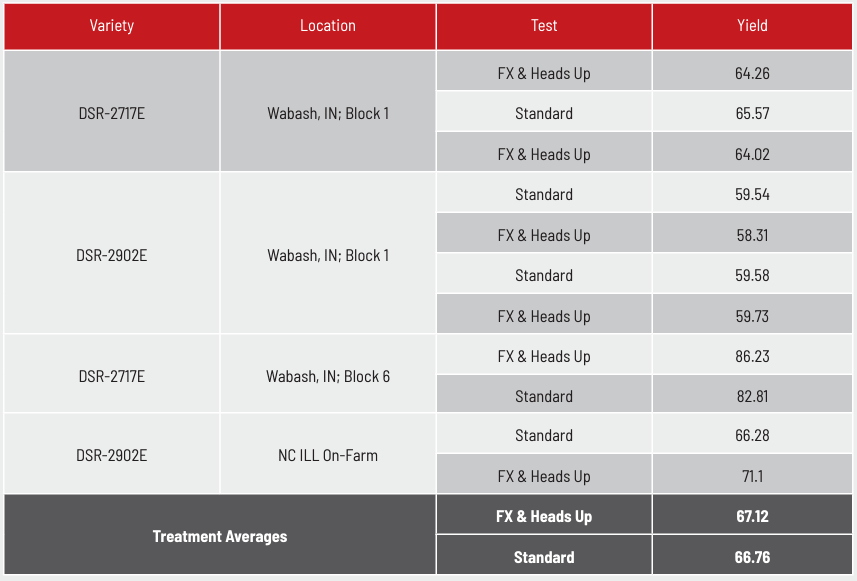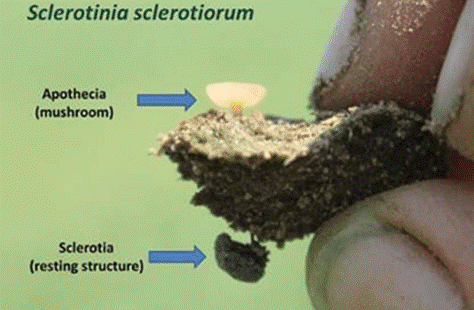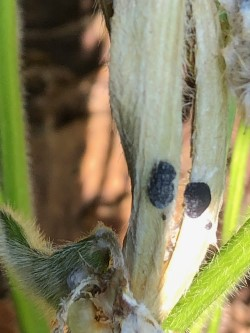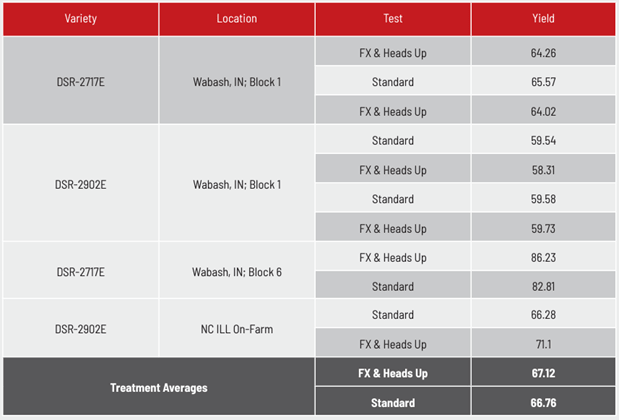2023 PAR (Product & Agronomy Research) Report: Soybean Seed Treatment Options for White Mold
BY Dairyland Seed Agronomy Team
The purpose of this study was to evaluate a seed treatment option in conjunction with our present Dairyland Seed treatments for the control of sclerotinia white mold (SWM).
SWM can be a serious disease in soybeans, and in the 2023 growing season, the Midwest saw some issues with it. This disease is usually favored by higher humidity and moderate to cool temperatures.


FIGURE 1: WHITE MOLD STRUCTURES. PHOTO BY MARTY CHILVERS,
MICHIGAN STATE UNIVERSITY
In 2023, although dry for most of the season, we received some triggering rain events. This rain caused many soybeans to put on lush growth. This increased humidity under the leaf canopy and created an ideal environmental situation for SWM development.
The white mold fungus, Sclerotinia sclerotiorum, survives in the soil as sclerotia then germinates (Figure 1) to produce mushrooms (apothecia). The apothecia releases spores that primarily infect the soybeans through sensing flowers around the R1-R3 (first flower-beginning pod) stage. White mold symptoms don’t usually appear until the R4-R6 (full pod-full seed) growth stages. Once white mold symptoms are apparent, fungicides will not be effective.
Knowing this, could we use a seed treatment as a preventative for SWM infections? We used replicated plots at our Indiana location and placed in field trials in northern IL and southern WI to evaluate.
It can be difficult to predict when white mold will strike in order to get a realistic look at the utility of this seed treatment.

TREATMENT
- Heads Up/ILEVO®/Soyfx™
- LumiGEN® seed treatment w/ Lumisena® fungicide, ILEVO® and insecticide
RESULTS
TABLE 1: 2023 MULTI LOCATION AND TRIAL RESULTS

CONCLUSION
As we review the data on limited locations, the advantage for this specific sclerotinia white mold treatment is limited on an aggregate basis. However, in those cases where it showed an advantage, it was overwhelming. In those cases, it was a 4-to-5 bushel advantage. In the cases where it was not successful, there was a slight yield disadvantage to equal yield.
Why? It is most likely due to standard variability within the plots. Where it did pay off the most seemed to be in areas with heavier SWM pressure, and varieties with limited SWM tolerances. We will further investigate this in the 2024 season on a larger area and with more on farm data. Given the lower cost of goods, and an overall positive return on yield, this may be a viable option to consider in your troubled SWM fields.

Brian Weller
Western Region
507.456.3034

Rod Moran
Western Region
507.456.3034

Dan Ritter
Central Region
219.863.0583

Branden Furseth
Northern Region
608.513.4265

Mark Gibson
Eastern Region
260.330.8968

Amanda Goffnett
Eastern Region
989.400.3793

Ryan Mueller
Eastern Region
989.400.3793
